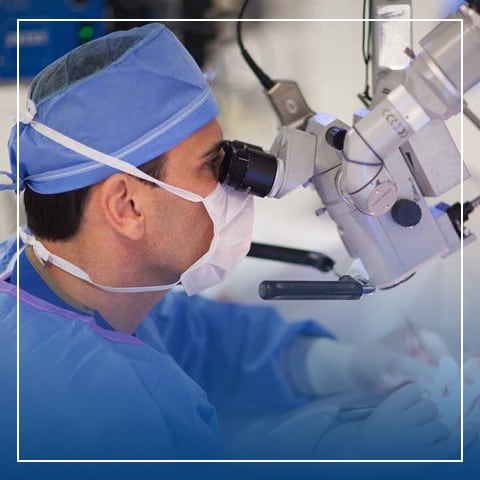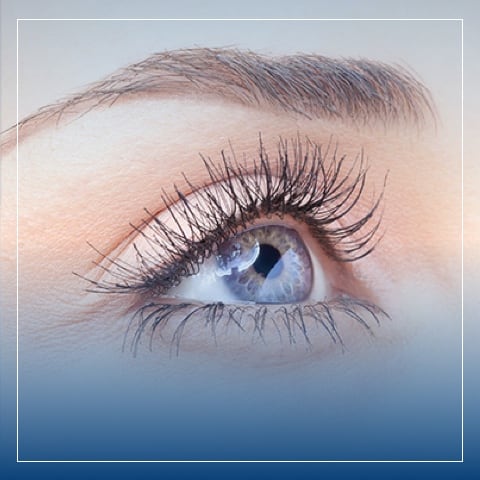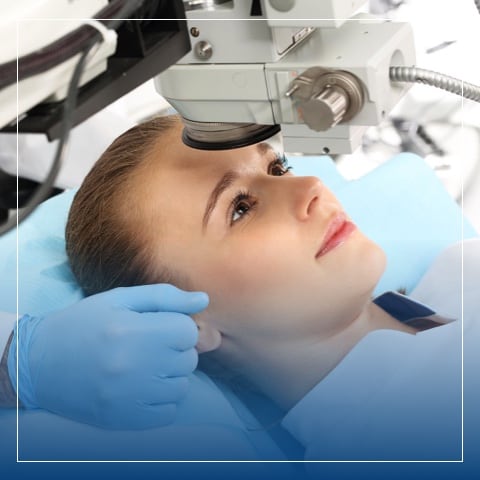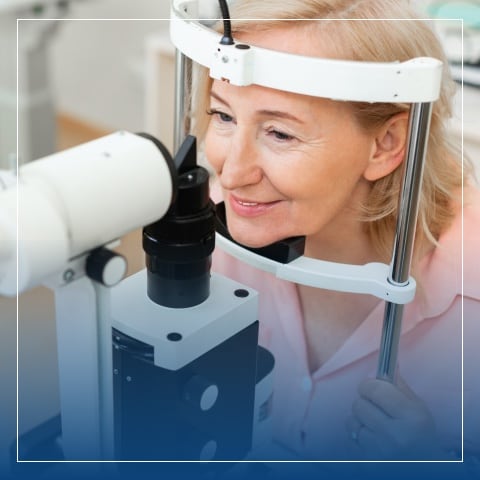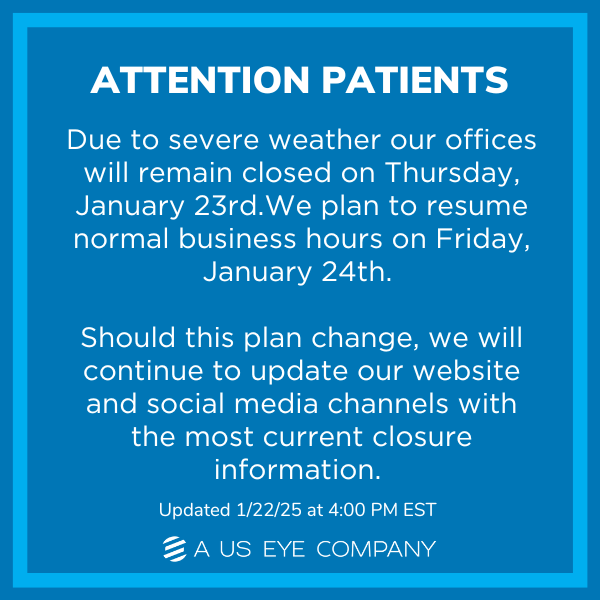

Vision Correction with LASIK
Have you thought about the impact better vision will have on your quality of life? No longer reaching for your glasses to see the clock, or suffering with the daily routine of contact lenses.
Those who visit Carolina Eyecare Physicians for LASIK eye surgery typically experience more than improved vision, they truly enjoy an enhanced quality of life. When you choose LASIK treatment with one of our nationally renowned ophthalmologists, you can expect a level of safety, precision, and care that is second to none.
When you’re considering LASIK vision correction, talk to our team to find out if LASIK may benefit you. Learn about LASIK treatment and other treatment alternatives with Carolina Eyecare Physicians.
What is LASIK?
Laser-assisted in situ keratomileusis (LASIK) is a type of refractive surgery and vision correction treatment. A surgeon uses a laser to reshape the cornea to correct refractive errors, including astigmatism, hyperopia (farsightedness), and myopia (nearsightedness). LASIK can improve the eye’s ability to focus, resulting in clearer vision.
It is one of the most popular forms of vision correction due to its accuracy, safety, quick recovery time, a wide range of correction, and minimal discomfort. The entire procedure takes only a few minutes, both eyes can be done the same day, and no needles, stitches or patches are necessary.

A Close Look at LASIK Surgery: Step-by-Step
There are 4 steps of the LASIK surgery procedure.
Step 1
Using wavefront technology, we take a digital image and map of your entire optical system- it’s like the fingerprint of your eye. This detailed information is evaluated by your provider and is transferred to the laser.
Step 2
Your provider then uses the safety and precision of a computer-controlled laser to create a corneal flap. They will then gently fold this flap back to prepare the eye for the treatment laser.
Step 3
A cool laser beam is then used to reshape the cornea and reduce sources of irregularities. Carolina Eyecare Physicians uses multiple tracking and alignment systems to ensure both safety and accuracy throughout your entire procedure.
Step 4
Finally, your provider will move the protective flap that was created in step two back to its original position. The cornea begins healing immediately, and the patient can return home.
LASIK FAQs
Learn the answers to the most common questions we get asked at Carolina Eye Physicians.
Does LASIK Correct Astigmatism?
World-renowned LASIK eye surgery specialists have used LASIK to correct astigmatism, as well as nearsightedness and farsightedness, for more than a decade.
Am I a Good Candidate for LASIK?
To be a good candidate for LASIK, the cornea must be of sufficient thickness to allow for the flap to be made with sufficient underlying tissue to be removed to achieve the targeted level of correction. Patients with severe dry eye syndrome, very thin corneas or other conditions such as the beginning stages of a cataract, may be better candidates for one of the other refractive procedures offered at Carolina Eyecare Physicians.
What are the Advantages of Blade-Free LASIK?
There are many advantages of blade-free LASIK, including:
- Improved Safety: Eliminates the most severe blade-related complications.
- Better Vision: Patients achieve statistically better vision when IntraLase is used in the LASIK procedure in comparison with the microkeratome (blade).
- Highest Degree of Predictability and Precision: Micron-level precision creates significantly more predictable and accurate flap dimensions, including most critically, reproducible flap thickness within +/- 10 microns, whereas the variability with microkeratomes has been reported up to +/- 40 microns.
- Reduced Dry Eye Symptoms: Several clinical studies demonstrate a significant reduction in dry eye symptoms, the largest of which shows patient symptoms were reduced by 72 percent.
- Individualized Flaps: The laser flap can be tailored to the patient’s needs, allowing physicians to individualize all steps in the LASIK procedure: custom diagnosis with wavefront, personalized flap creation with IntraLase, and custom laser treatment with custom ablation.
What is the Recovery Time for LASIK?
LASIK patients recover very quickly with vision returning rapidly and the majority of patients seeing well enough to drive the next day, without glasses or contact lenses. Most patients elect to have LASIK performed on both eyes at the same time.

Other Types of Refractive Surgical Procedures
We are pleased to offer a variety of the latest refractive surgical procedures including: all laser LASIK, epi-LASEK, refractive lens exchange (RLE), intra-corneal implants, and the implantable contact lens (ICL).
Advancements in technology have allowed our team to truly customize the vision correction needs of each patient. Because each patient’s ocular anatomy and visual goals are unique, our ophthalmologists will explain which vision correction option will allow you the greatest opportunity to minimize dependence on glasses or contacts, while maximizing safety and effectiveness.
Epi-LASEK
Epi-LASEK (or PRK) is a laser vision correction procedure in which the cornea is reshaped directly on the surface rather than under a flap as with LASIK. It offers some advantages over LASIK for certain patients such as those with thin corneas or some other corneal conditions.
With Epi-LASEK, the surface epithelium, or thin layer of protective skin covering the cornea is loosened with a diluted alcohol solution and moved aside. The surface under the epithelium is then treated with the ALLEGRETTO WAVE Eye-Q Excimer laser. The epithelium is removed and a bandage contact lens is placed over the treated area to make the eye more comfortable during the healing process.
It usually takes three to five days for the epithelium to fully regenerate. Because the return to functional vision is longer than with LASIK, Epi-LASEK patients should allow several days for recovery before returning to full activity. Although final vision recovery takes longer than LASIK, visual outcomes of both procedures are similarly excellent.
Implantable Contact Lens
The Implantable Contact Lens (ICL) is an intraocular lens, or a lens that is placed inside the eye. It differs from intraocular lens implants (IOLs) that are used in cataract and Refractive Lens Exchange procedures in that the ICL is added to the eye without removing the natural lens. ICL candidates are between the ages of 21 and 55 with moderate to severe nearsightedness, typically outside the range of correction with LASIK or Epi-LASEK.
What is the EVO ICL Lens?
EVO ICL is an Implantable Collamer™ Lens that corrects common vision problems such as nearsightedness (myopia) and astigmatism. Collamer is a biocompatible material that works in harmony with the eye. The lens, which is slightly smaller than a typical contact lens, is implanted in the eye during a 20 to 30 minute procedure. Unlike laser vision correction surgeries that permanently change the shape of your cornea, the EVO ICL procedure is additive, meaning that no corneal tissue is removed. Worldwide, more than 1 million EVO Visian ICL lenses have been implanted.
What are the benefits of EVO ICL?
EVO ICL offers many benefits for patients who are candidates for the ICL procedure and are seeking a vision solution that allows them the freedom of less dependence on glasses or contact lenses. The advantages of EVO ICL include:
- Sharp, clear vision
- Excellent night vision
- Does not cause dry eye syndrome
- Quick procedure and recovery
- No removal of corneal tissue
- Removable by your doctor
- Protection from UV Rays
Who is a candidate for Vision Correction with EVO ICL?
People who want a flexible and biocompatible vision correction option, as well as many patients who are not candidates for laser vision correction, find that EVO ICL is the right procedure for them.
Ideal candidates for EVO ICL:
- Are between the ages of 21 and 45
- Are seeking a vision correction solution for moderate to severe nearsightedness (with or without astigmatism)
- Have a stable prescription that has not changed within the last year
- Have good ocular health with no history of glaucoma, iritis, or diabetic eye disease
How is the EVO ICL Lens Procedure Performed?
Vision correction with the EVO ICL is an outpatient procedure that typically takes 20 to 30 minutes. After an initial exam with your ophthalmologist to determine that the EVO ICL is right for you, you will schedule your procedure. On the day of the procedure, your eyes will be numbed with an anesthetic eye drop and your refractive surgeon will implant the ICL between the iris (colored part of the eye) and the natural lens. Your surgeon will likely schedule a follow-up appointment the same day as the procedure.
Can the EVO ICL Lens be Removed?
Yes, the EVO ICL is intended to provide permanent vision correction, but it can be removed or upgraded by your surgeon.
Will I be able to feel the EVO ICL Lens?
No, patients should not feel the lens as it does not adhere to any structures within the eye and does not move once in place.
Will other people be able to see the EVO ICL Lens?
No, the EVO lens is placed behind your iris where only your eye doctor will be able to detect it.
Are there any risks with the EVO ICL Procedure?
Any medical procedure has certain risks associated with it. Potential complications of the EVO ICL procedure, although rare, include inflammation, an increase in eye pressure, or the need for an additional procedure, like an ICL exchange. While these potential risks are mitigated as much as possible, they can all typically be addressed early and without long-term side effects.
Book a LASIK Consultation
Opening your eyes first thing in the morning with clear vision doesn’t have to just be a dream. Find out if laser eye surgery can benefit you! Contact us at Carolina Eyecare Physicians to book your LASIK consultation.
Locations
We have several convenient locations throughout South Carolina. Please view the nearest location to you or get directions below.
Our Services
News
Dry Eyes in Winter: Relief Tips and When to Visit Your Eye Doctor
Dry EyeWinter often feels cozy, with heavier clothes, warm drinks, and more time indoors. For many people, it also brings a change in eye comfort. Dry, itchy, burning eyes become more common as the air dries out and indoor heating runs for longer stretches. When dry eyes in winter move from an occasional annoyance to a […]
Read More… from Dry Eyes in Winter: Relief Tips and When to Visit Your Eye Doctor
What Causes Eye Allergies? How Early Check-Ups Can Save Your Eyes
Eye SurgeryFor many, itchy, watery, red eyes are more than a minor annoyance. These are the classic signs of allergic conjunctivitis, or what’s more broadly referred to as eye allergies. Understanding what causes eye allergies and recognizing the signs early can help keep symptoms manageable while protecting long-term eye health. What causes eye allergies? Eye allergies […]
Read More… from What Causes Eye Allergies? How Early Check-Ups Can Save Your Eyes
Cataract Surgery Lens Options: Choosing the Best Lens for Clear Vision
Cataract SurgeryMaking the right choice among cataract surgery lens options is important, as the lens you select (known as an intraocular lens, or IOL) sets the baseline for your sight. Surgeons will always walk you through the options and provide a recommendation, but knowing what kind of visual goals you have, based on your day-to-day life […]
Read More… from Cataract Surgery Lens Options: Choosing the Best Lens for Clear Vision
Dry Eyes in Winter: Relief Tips and When to Visit Your Eye Doctor

Winter often feels cozy, with heavier clothes, warm drinks, and more time indoors. For many people, it also brings a change in eye comfort. Dry, itchy, burning eyes become more common as the air dries out and indoor heating runs for longer stretches. When dry eyes in winter move from an occasional annoyance to a […]
Read More… from Dry Eyes in Winter: Relief Tips and When to Visit Your Eye Doctor
What Causes Eye Allergies? How Early Check-Ups Can Save Your Eyes

For many, itchy, watery, red eyes are more than a minor annoyance. These are the classic signs of allergic conjunctivitis, or what’s more broadly referred to as eye allergies. Understanding what causes eye allergies and recognizing the signs early can help keep symptoms manageable while protecting long-term eye health. What causes eye allergies? Eye allergies […]
Read More… from What Causes Eye Allergies? How Early Check-Ups Can Save Your Eyes
Cataract Surgery Lens Options: Choosing the Best Lens for Clear Vision
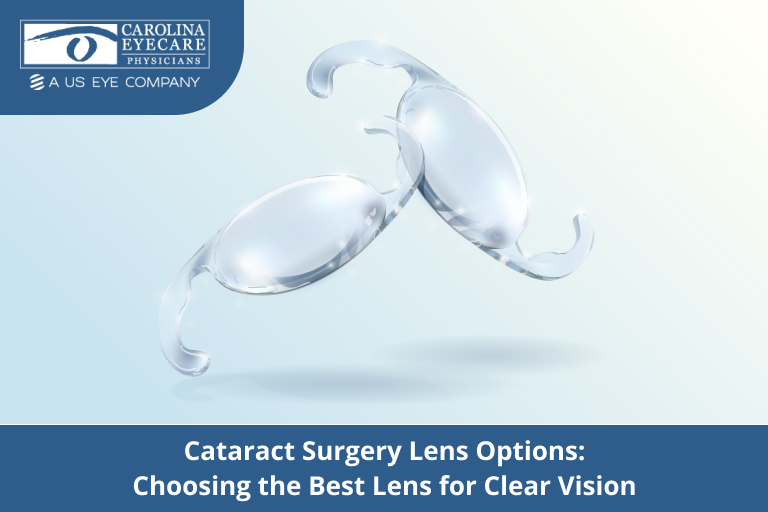
Making the right choice among cataract surgery lens options is important, as the lens you select (known as an intraocular lens, or IOL) sets the baseline for your sight. Surgeons will always walk you through the options and provide a recommendation, but knowing what kind of visual goals you have, based on your day-to-day life […]
Read More… from Cataract Surgery Lens Options: Choosing the Best Lens for Clear Vision

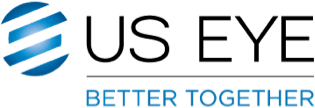
We are a proud partner of US Eye, a leading group of patient-centric, vertically integrated multi-specialty physician practices providing patients with care in ophthalmology, optometry, dermatology, audiology, and cosmetic facial surgery.

